#charles malin
Explore tagged Tumblr posts
Text

dante roman
passage from Ulysses by james joyce [the bodley head, london, 1967 (seventh impression, w/ corrections), p188].
set in digital reissue of monotype dante roman. dante is the 20th c. statement of renaissance inspired roman & italic by consummate typographer-printer giovanni mardersteig. the founts were initially proprietary to maredrsteig’s private press, the officina bodoni; first showning was a handset edition of boccaccio, Trattello in laude de Dante [officina bodoni, verona, 1955]—typeface name thus acquired. the punches were engraved by one of the last gifted punch-cutters, charles malin of paris, & subsequently served as basis for monotype’s pantograph-engraved matrices; monotype dante first issued in 1957 [english monotype 592]. [cf. john dreyfus, The Work Of Giovanni Maredersteig with Monotype Faces, the monotype corporation, london, 1967.]
finishing fleuron pair selected from p22 victorian. of their provenance—no clue.
for the dante italic vide ‹bembismo 2›.
3 notes
·
View notes
Text
Fish and Chips’ Surprising Jewish History. Jamie Oliver confirmed it!
You may be surprised to learn that fish and chips, though wildly popular in England for what seems like eternity, was actually a specialty of the Portuguese Sephardic Jews who fled the Inquisition in the 16th century and found refuge in the British Isles. Celebrity Chef Jamie Oliver referred to this recently in an article in the New York Times, adding that, “Dishes evolve, impacted by trade, war, famine and a hundred other forces.”

Among those “other forces” are dishes born of religious ritual. For observant Jews, fish is pareve, a neutral food in kosher terms, thus an easy way to avoid treyf (non-kosher food) and possibly include dairy in the same meal. It was especially important for Marranos, the so-called crypto-Jews, who pretended to be Christian during the Inquisition. They ate fish on Fridays, when meat was forbidden by the Church, and also saved some to eat cold the next day at lunch, to avoid cooking on Shabbat.
Frying was natural for Jewish home cooks — think of latkes and sufganyiot — and as the Jewish community began to flourish in England, it spurred a taste for its beloved fried, battered fish throughout the country. According to Claudia Roden’s The Book of Jewish Food, Thomas Jefferson tried some on a trip to London and noted that he ate “fish in the Jewish fashion” during his visit. Alexis Soyer, a French cook who became a celebrated chef in Victorian England included a recipe for “Fried Fish, Jewish Fashion” in the first edition of his cookbook A Shilling Cookery for the People (1845). Soyer’s recipe notes that the “Jewish manner” includes using oil rather than meat fat (presumably lard), which made the dish taste better, though also made it more expensive.
There’s some dispute about the where and when of “chips” (what we Americans call French fries and the French call pommes frites). Many historians say that deep-fried, cut-up potatoes were invented in Belgium and, in fact, substituted for the fish during hard times. The first time the word “chips” was used was in Charles Dickens’ A Tale of Two Cities in 1859: “husky chips of potato, fried with some reluctant drops of oil.”
The official pairing of fish and chips didn’t happen until a few years later, though. Although there are some who dispute it, most authorities say that it is thanks to a Jewish cook, this time a young Ashkenazi immigrant named Joseph Malin, who opened the first British chippy, AKA fish and chip shop, in London in 1863. The shop was so successful it remained in business until the 1970s.
Who could foresee that fearful Jewish immigrants hiding their true religion and practicing in secret would be responsible for creating one of the most iconic dishes in the U.K.? The down-home dish that Winston Churchill claimed help the British defeat the Nazis, the comfort food that George Orwell said helped keep the masses happy and “averted revolution.” The dish, by the way, that was among the only foods never rationed during wartime because the British government believed that preserving access to it was a way of keeping up morale. A dish that continues to be a mainstay of the British diet.
Think about that the next time you find yourself feasting on this centuries-old — Jewish? British? — recipe.
These days, some restaurants are putting a new spin on fish and chips. Almond crusted. Baked instead of fried. Quinoa coated. Sweet potato fries instead of regular. And those are all fine; as Oliver says, “Dishes evolve.” But plain old fish and chips endures and probably always will. Good recipes usually do.
H/T : @scartale-an-undertale-au
Naveed Anjum
#Jews#crypto jews#jewish cuisine#fish and chips#israel#secular-jew#jewish#judaism#israeli#jerusalem#diaspora#secular jew#secularjew#islam#global cuisine#global foods#cooking#home cooking#history of food#fish n chips#marrano#jamie oliver#chippy#England#London#Britain
278 notes
·
View notes
Note
just stumbled into one of your snippets and i'm OBSESSED with your writing style. it is so fluid and punchy and such a delight to read. if you ever feel like answering, how does your writing process works? what are your inspirations, style and tone-wise? and what themes do you enjoy exploring the most?
have a lovely day! 💌
Oh, that's... WELL. That's! The best compliment you could have sent me, thank you so much, I don't know what to say.. I'm actually trying to write a... I'm gonna call it a novel when it's just a mess of fragments right now, but—yeah. Fluid and punchy is exactly what I strive to achieve with the character's voice so this is so nice to hear. WHATEVER. THANK YOU.
Anyway! My writing process is really... steeped in rhythm, I guess? It starts with character writing, which leads me to character voice, which leads me to finding the right "mind" tempo, and from it cascades the headspace I need to write. In that, in the idea of perspective and voice influencing the story first, I'm indebted to Faulkner, to Marlon James, to Woolf's The Waves, to Shirley Jackson—to the perspectivism twists of horror and gothic writing as a general rule. Rereading her, I think Emily Brontë has shaped my metaphorical network very early on, and my handling of violence, especially in dialogue—though more recently, Tamsyn Muir made me tick about dialogue too. Malin Rydén is one of my utmost inspirations, not a little because the main character of my story was first created for his story, but also because he was my gateway into harder, grittier speculative fiction and digital literature, which both inspire me now for the story I'm trying to shape—horror out of the gothic castle and into the terrible anticipation of what comes next, with more politics, with ghosts and body horror twisted to technology. In terms of pure form, I'm extremely impacted by poetry—E. E. Cummings, Alice Oswald, Emily Dickinson—those who deconstruct syntax to wrangle it into breath. He didn't influence me because I discovered him too late, but I feel a kinship to some of the early stylistic experimentations of Frank Bidart too. Hanif Abdurraqib, whose first name I gave to one of my main characters too because his voice is incredible: it moves. Charles Olson's Projective Verse gestures at what I feel when I write, you know? "ONE PERCEPTION MUST IMMEDIATELY AND DIRECTLY LEAD TO A FURTHER PERCEPTION (…). Always one perception must must must MOVE, INSTANTER, ON ANOTHER! (…)" and then "Breath allows all the speech-force of language back in." Even silence can be your story-weapon.
I'm interested in... blowing apart labels, dichotomies, I think, making them harder to grapple with—right and wrong, love and hate, personal and universal; transgressions, fluidity; how language fails, how language betrays; the way human connection can both fuck you and raise you up, in its constant failure and constant trying, in the violence of intimacy, in the tension between hardness and vulnerability—more than anything, I'm interested in the way individual desires clash with collective needs or personal ideals, in the lies and justifications you can find for yourself, in what it means for you when you come to dismantle them (or refuse to). I love palimpsest, stories retold again and again, and/or I love difficult, ugly settings, speculative and dystopia topics, I want the story to be political in itself, even when it's not politicking; and I LOVE mindfucks: using our terribly faulty, terribly subjective perception / perspective / memory / dreams / FEARS / intellect to tell a story that is both fascinating because it's unique, and trapped by it. Can't escape yourself. What are you gonna do with yourself (against yourself, for yourself) now?
Formally, I try to use that in writing: trapping the reader in one voice that swallows them really, ideally that jostles them a little, that blurs the boundary between them and the character: extreme immersion. I like to try and convey emotion / impression and even action as it is experienced, rather than explaining it clearly. In that phenomenology has influenced me, I guess? Deleuze, Guattari, Merleau-Ponty, and poetry again, I guess. Archibald McLeish says "a poem should not mean / but be...", and that's what I try to do with the character I choose, and then I let them be, and they drive both the story and the writing that should echo it—form and content cycling each other like mirrors.
Goddamnit, that got so long. Anyway. THANK YOU for being interested, I'm really touched.
25 notes
·
View notes
Text
Opera on YouTube 3
Il Barbiere di Siviglia (The Barber of Seville)
Mario Lanfrachi studio film, 1965 (Sesto Bruscantini, Valeria Mariconda, Ugo Benelli; conducted by Alberto Zedda; no subtitles)
Jean-Pierre Ponnelle studio film, 1974 (Hermann Prey, Teresa Berganza, Luigi Alva; conducted by Claudio Abbado; English subtitles)
New York City Opera, 1976 (Alan Titus, Beverly Sills, Henry Price; conducted by Sarah Caldwell; English subtitles)
Arena Sferisterio, 1980 (Leo Nucci, Marilyn Horne, Ernesto Palacio; conducted by Nicola Rescingo; no subtitles)
Teatro Real de Madrid, 2005 (Pietro Spagnoli, Maria Bayo, Juan Diego Flórez; conducted by Gianluigi Gelmetti; Arabic subtitles)
Teatro la Fenice, 2008 (Roberto Frontali, Rinat Shaham, Francesco Meli; conducted by Antonino Fogliani; Italian subtitles)
Royal Opera House, Covent Garden, 2009 (Pietro Spagnoli, Joyce DiDonato, Juan Diego Flórez; conducted by Antonio Pappano; English subtitles)
Vienna State Opera, 2019 (Rafael Fingerlos, Margarita Gritskova, Juan Diego Flórez; conducted by Evelino Pidó; English subtitles)
Arena di Verona, 2022 (Leo Nucci, Nino Machaidze, Dmitry Korchak; conducted by Daniel Oren; English subtitles)
Garsington Opera, 2023 (Johannes Kamler, Katie Bray, Andrew Stenson; conducted by Douglas Boyd; English subtitles)
Rigoletto
Wolfgang Nagel studio film, 1977 (Rolando Panerai, Franco Bonisolli, Margherita Rinaldi; conducted by Francesco Molinari-Pradelli; Japanese subtitles)
Metropolitan Opera, 1977 (Cornell MacNeil, Plácido Domingo, Ileana Cotrubas; conducted by James Levine; no subtitles)
Metropolitan Opera, 1981 (Cornell MacNeil, Luciano Pavarotti, Christiane Eda-Pierre; conducted by James Levine; no subtitles)
Jean-Pierre Ponnelle film, 1982 (Ingvar Wixell, Luciano Pavarotti, Edita Gruberova; conducted by Riccardo Chailly, English subtitles)
English National Opera, 1982 (John Rawnsley, Arthur Davies, Marie McLaughlin; conducted by Mark Elder, sung in English)
La Monnaie, Brussels, 1999 (Anthony Michaels-Moore, Marcelo Álvarez, Elizabeth Futral; conducted by Vladimir Jurowski; no subtitles)
Arena di Verona, 2001 (Leo Nucci, Aquiles Machado, Inva Mula; conducted by Marcello Viotti; Italian subtitles)
Zürich Opera house, 2006 (Leo Nucci, Piotr Beczala, Elena Mosuc; conducted by Nello Santi; no subtitles)
Paris Opera, 2016 (Quinn Kelsey, Michael Fabiano, Olga Peretyatko; conducted by Nicola Luisotti; English subtitles)
Teatro Massimo, 2018 (George Petean, Ivan Ayon Rivas, Grazia Schiavo; conducted by Stefano Ranzani; English subtitles)
Così Fan Tutte
Vaclav Kaslik studio film, 1969 (Gundula Janowitz, Christa Ludwig, Luigi Alva, Hermann Prey; conducted by Karl Böhm; English subtitles)
Jean-Pierre Ponnelle studio film, 1988 (Edita Gruberova, Delores Ziegler, Luis Lima, Ferruccio Furlanetto; conducted by Nikolaus Harnoncourt; English subtitles) – Act I, Act II
Teatro alla Scala, 1989 (Daniela Dessì, Delores Ziegler, Josef Kundlak, Alessandro Corbelli; conducted by Riccardo Muti; Italian subtitles) – Act I, Act II
Théâtre du Châtelet, 1992 (Amanda Roocroft, Rosa Mannion, Rainer Trost, Rodney Gilfry; conducted by John Eliot Gardiner; English subtitles)
Vienna State Opera, 1996 (Barbara Frittoli, Angelika Kirschlager, Michael Schade, Bo Skovhus; conducted by Riccardo Muti; English and Italian subtitles)
Teatro Comunale di Ferrara, 2000 (Melanie Diener, Anna Caterina Antonacci, Charles Workman, Nicola Ulivieri; conducted by Claudio Abbado; no subtitles)
Zürich Opera House, 2000 (Cecilia Bartoli, Liliana Nikiteanu, Roberto Saccá, Oliver Widmer; conducted by Nikolaus Harnoncourt; no subtitles) – Act I, Act II
Opera Lyon, 2007 (Maria Bengtsson, Tove Dahlberg, Daniel Behle, Vito Priante; conducted by Stefano Montanari; French subtitles)
Salzburg Festival, 2009 (Miah Persson, Isabel Leonard, Topi Lehtipuu, Florian Boesch; conducted by Adam Fischer; English subtitles)
Zürich Opera House, 2009 (Malin Hartelius, Anna Bonitatibus, Javier Camarena, Ruben Drole; conducted by Frans Welser-Möst; English subtitles)
Aïda
San Francisco Opera, 1981 (Margaret Price, Luciano Pavarotti; conducted by Luis Garcia Navarro; no subtitles)
Metropolitan Opera, 1985 (Leontyne Price, James McCracken; conducted by James Levine; English subtitles) – Act I, Act II, Act III, Act IV
Teatro alla Scala, 1986 (Maria Chiara, Luciano Pavarotti; conducted by Lorin Maazel; English subtitles)
Metropolitan Opera, 1989 (Aprile Millo, Plácido Domingo; conducted by James Levine; English subtitles)
Teatro Comunale di Busseto, 2001 (Adina Aaron, Scott Piper; conducted by Massimiliano Stefaneli; Italian subtitles)
St. Margarethen Opera Festival, 2004 (Eszter Szümegi, Konstantin Andreev; conducted by Ernst Marzendorfer; English subtitles)
Metropolitan Opera, 2012 (Liudmyla Monastyrska, Roberto Alagna; conducted by Fabio Luisi; Russian subtitles)
Tbisili State Opera, 2017 (Maqvala Aspanidze, Franco Tenelli; conducted by Marco Boemi; Russian subtitles)
Teatro Colón, 2018 (Latonia Moore, Riccardo Massi; conducted by Carlos Vieu; Spanish subtitles)
Teatro la Fenice, 2019 (Roberta Mantegna, Francesco Meli; conducted by Riccardo Frizza; French subtitles)
#opera#youtube#complete performances#il barbiere di siviglia#rigoletto#così fan tutte#aida#gioachino rossini#giuseppe verdi#wolfgang amadeus mozart
19 notes
·
View notes
Text
Do you know Yates County?: Yates County Oddity No. 1 through No. 26
By Jonathan Monfiletto
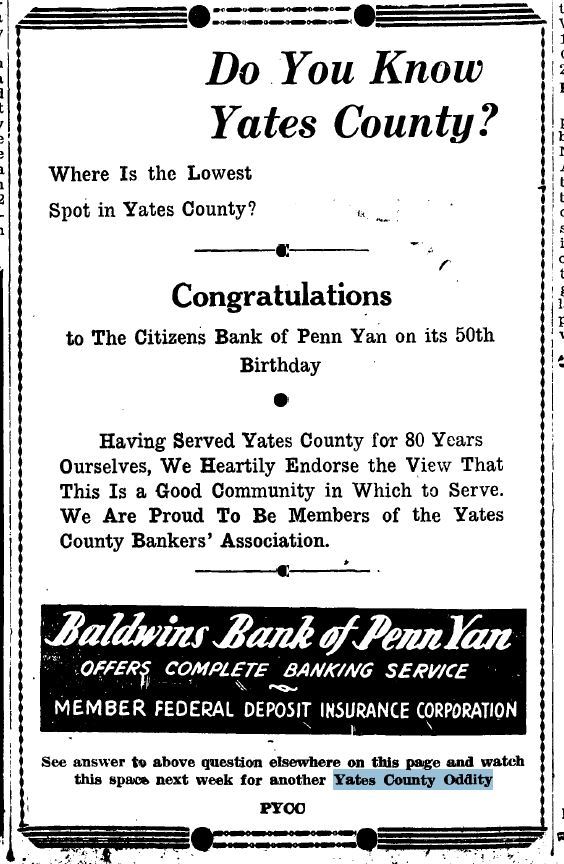
Anyone who has conducted research either through Yates County’s digitized newspapers or the Yates County History Center’s subject files has likely come across items titled either “Penn Yan Oddity” or “Yates County Oddity.” These items – snippets might be a good word – provide information about various aspects of local history, seeming to answer some sort of question or mystery.
Seeing so many of these snippets – and finding the answers but seeming not to find the question – I decided to scour our digitized newspaper database to see if I could find all of them, the questions with the answers. It turns out the oddities – 90 Penn Yan Oddity items, 52 Yates County Oddity items – were part of an advertising campaign in the 1940s for Baldwin’s Bank, then located at 127 Main St. in Penn Yan, the present-day home of the Arts Center of Yates The Penn Yan Oddities ran in The Chronicle-Express in consecutive weeks from February 20, 1947 to November 11, 1948, and then the Yates County Oddities picked up right away in the newspaper from November 18, 1948 to November 24, 1949. So, for more than 2 and a half years, readers of The Chronicle-Express learned something about local history each week in the newspaper.
Each item started out as an advertisement for Baldwin’s Bank with the phrase “Do You Know Yates County?” at the top of the graphic followed by the question for the week. In the middle, the bulk of the ad, would appear information about the bank’s various services and offerings. The bottom would direct the reader to look for the answer elsewhere on the same page and then look for another Oddity the following week.
In this article, I present Yates County Oddity No. 1 through No. 26. Each question and answer has been transcribed exactly as it appeared in the newspaper, which changes made only for typographical errors and not for grammatical errors. The only time words have been removed from the items is in the case of references to photographs that appeared in the newspaper.
1) Where are there 10 different classifications of soil within ½ mile?
A Yates County soil analysis made in 1916 shows that at Fiveville, a little south of Italy Hill, there are 10 classifications of soil within a half-mile radius: Wooster, gravelly silt loam and stoney silt loam, Volusia flat phase silt loam and silt loam, muck, Holly silt loam, Papakating silt clay loam, Chenango gravelly silt loam, Lordstown stoney silt loam, and Genesee silt loam.
2) What farm still uses an “old oaken bucket?”
There is an “Old Oaken Bucket” well still in use on the old McFarren farm, Penn Yan, RD 4, now owned by H.M. Fulkrod. The bucket is lowered by a rope and there is a wood hand brake to slow the speed as it descends the well. When filled, the bucket is drawn up by turning the crank attached to the wooden spool.
3) Who was the first white child born here?
The great grandfather of Charles Beaumont, Penn Yan insurance agent and real estate brother, is said to be the first white child born in what is now Yates county. Joseph Hopeton Beautmont was born Sept. 26, 1798, to James Beaumont, native of England, and Mary Malin Beaumont, flollowers of Jemima Wilkinson. Their child was the first born in the New Jerusalem settlement. J.H. Beaumont died June 27, 1893, in the residence at 109 East Main street, now owned and occupied by Herbert Thayer. The old “Beaumont” horseblock may still be seen in front of the residence.
4) Bricks for what building were made of clay dug from the building’s cellar?
Sixty years ago this summer clay was removed when the basement for Ball hall of Keuka institute and college was being excavated. The same clay went chiefly into the making of the interior bricks from which the present structure was built.
5) What township was called Vernon?
From Jerusalem township of Ontario county in 1803 a new township, including what is now Milo and Torrey, was created and named Vernon. But Oneida county had created a Vernon township a year earlier, so confusion resulted. As a result on April 6, 1809 the state legislature changed the name of Vernon township, Ontario county, to Snell, honoring the state senator, Jacob Snell from Montgomery county.
Residents of this area apparently saw no reason for honoring a senator from another county, so assembled in a protest meeting at the inn of Luman Phelps, located at the corner of Main and Head streets in the young village of Penn Yan. The group petitioned the legislature to change the name to Benton township, honoring Levi Benton, the first settler in the region. On April 2, 1810, Albany nodded consent.
Milo township was set up and apart from Benton township in 1818 and Torrey township was separated from Benton in 1851.
6) What traditional birthplace of a people is in Yates?
Bare Hill in the western section of Yates county on the east side of Canandaigua lake is famous in legends of the early inhabitants of Yates county as the supernatural birthplace of the Seneca Indians.
7) What was the first name of Starkey town?
Both Starkey and Barrington townships were originally, along with Tyrone, Wayne, and Reading townships, now of Steuben and Schuyler counties, a part of Frederickton in Steuben county. Afterwards Reading was cut off and the Town of Wayne, including what is now Barrington, was organized. In 1822 Barrington was organized with the boundaries that define it today and in 1826, along with Starkey, it was annexed to Yates county.
8) Where was the nearest toll gate to Penn Yan?
A toll gate on the Penn Yan Branchport plank roead was near the site of the Allison and Daniels office ��� the old Hanford farm. The toll gate at the other end of the road was near Esperanza at the foot of the old road that ascends the hill west of the spacious mansion. Many older residents can remember the ruins of this toll gate house.
9) What surveyor was first settler of a town?
John Mower, 18, carried the chain, served as cook and was in charge of the pack horses for the crew which surveyed the new pre-emption line from Pennsylvania’s north border to Lake Ontario. In 1790 he settled in West River hollow, Italy township. Italy was originally part of Middletown township, organized in 1789, but changed to Naples township in 1808. Seven years later Italy township was set off. John Mower is quoted in history as saying that one spring he killed 314 rattlesnakes on the west side of the stream not far from the rocky ledges where they hibernated. The township was then rich in a dense forest of noble trees.
10) What rural cemeteries were once next to churches?
The cemetery near Swing’s or Ovenshire’s corners on the Penn Yan-Dundee road in Barrington and the Nettle Valley cemetery on the Penn Yan-Potter road, road were once adjoining churches. The church buildings have long since been removed and their location obliterated.
Do you know of any others in Yates county?
11) What was the first barn west of Seneca Lake?
In 1791, according to tradition, Caleb Benton built a barn 30 by 40 feet, starting on Monday morning with trees standing in the woods. These, it is said, were felled, hewed, and framed and the barn enclosed so that wheat was drawn into it by Saturday.
This was reported to be the first barn built west of Seneca lake.
12) Is there a battle ground sites in Yates?
The nearest any part of the present area of Yates county came to becoming a battleground was Sept. 9, 1779, when 400 of General Sullivan’s riflemen were sent along the west side of Seneca lake from the site of Geneva to what is now Kashong point and there wrecked the Indian settlement. Resistance of the [Native Americans] was insignificant if not entirely lacking.
The power of Indians had been broken in the battle of Newtown, east of Elmira.
13) What is Lake Keuka unlike other lakes?
Lake Keuka is unique, but not because it is shaped like the letter Y.
Geologists say that it is perhaps the only body of Y-shaped water with one of the upper branches an inlet and the other an outlet. Elsewhere nature has made the two top branches inlets and the base branch an outlet. Early glacial action, say geologists, created this freak. Water flows in at Hammondsport, the south end, also at Branchport, one of the north ends, and flows out through the other north end by way of the East or Penn Yan branch.
14) How old is the Friend house?
While commonly referred to as 150 years, the actual age of the Jemima Wilkinson house in Jerusalem is a matter of dispute. Arnold Potter, descendant of the early Friend settlers, believes the dwelling was some five years in the building and was completed in 1815. Her death occurred four years later. The Friend joined her followers near City Hill, Torrey township, in 1790 and there built the first frame dwelling in western New York. This would have been 25 years before completion of the Jerusalem home which still stands.
15) Where is there a Kentucky coffee tree?
On the east side of Route 14, the Dresden-Geneva state road, just before crossing the bridge over Kashong creek as one drives north out of Yates into Ontario county is a Kentucky Coffee tree – a rare sight in this vicinity. The tree is conspicuous because of its large leaf and uniquely shaped seed pod.
Does anyone know of any others in Yates county?
16) Through what bay does Yates rainfall reach ocean?
Practically all the area of Yates county drains into Canandaigua, Keuka, or Seneca lakes or into Potter swamp and runs eventually through the St. Lawrence river and bay into the Atlantic ocean. But a very limited section of South Italy and Jerusalem townships drain into the Cohocton and a bit of southern Barrington into Waneta and Lamoka lakes from when the water may flow through the Susquehanna system into the Atlantic by way of the Chesapeake bay, some 1,000 miles south of the St. Lawrence.
17) How many Yates places use Old World names?
At least four Yates county townships – Italy, Jerusalem, Milo, and Middlesex – have names which were long famous in England or on the continent of Europe. Also two villages – Dundee and Dresden.
Do you know of any other Yates community names borrowed from other countries?
18) What famous orator was born in this county?
Some of the addresses of Red Jacket, famed Indian orator, have been included in printed collections of the famous speeches of the years. But Red Jacket may or may not have been born in Yates county. Historians disagree upon the place of his birth. It may have been near Branchport or at Canoga, in Seneca county.
Robert G. Ingersoll, agnostic and brilliant orator, was born in Dresden Aug. 11, 1833. His birthplace is being preserved in his memory.
19) Where is the highest spot in Yates County?
The highest spot in Yates county is 2,130 feet above sea level and includes a few acres on the high plateau just west of the Jerusalem township line in Italy, about six miles west and a bit north of Branchport. It was in this area that a bomber crashed during World War II, killing all occupants.
20) Where is the lowest spot in Yates County?
The lowest spot in Yates county is above sea level – and is located somewhere in the bottom of Seneca lake this side of the Seneca county line which is in the middle of the lake.
Within the last few years Yates county has “settled” a great deal – some 400 feet roughly. Up to that time the eastern boundary of the county was highwater mark on the west shore of Seneca lake, which is listed as about 444 feet above sea level. This boundary caused much confusion. Game Protector Clay White, for example, apprehending a duck hunter or fisherman off the Yates county shore for some violation, had to take his man all the way around the end of Seneca lake, possibly 40 miles, to bring him before a Seneca county official. Assemblyman Vernon Blodgett introduced a bill a few years ago placing the county boundary in the middle of the lake.
In spots Seneca lake bottom is said to be even a bit below sea level.
21) How may lakes are there in the county?
There are no lakes in Yates county – entirely within the county, that is.
More than half of the Lake Keuka shoreline is within Yates, about seven miles of the Canandaigua shore line and over 20 miles of Seneca lake’s west shore. Lakes Waneta and Lamoka are just beyond the county boundaries.
22) How many railroads are there in the county?
Three different railroad companies operate lines in Yates county: the Pennsylvania, the New York Central, and the Lehigh Valley, the latter running diesel motors over the Middlesex Valley line between Geneva and Naples. These are the first diesels to be used in regular service in the county.
23) How many schools are there in the county?
While there are 50 rural school districts in Yates county, according to Superintendent Stephen Underwood of Branchport, but 26 of them maintain a school. Of the remaining 24 districts, 8 have sold their buildings; the others being idle, actually there are 32 schools in Yates county, if you add to the above 26 rural schools, the Middlesex Valley and Dundee central schools, St. Michael’s Parochial school in Penn Yan, the Penn Yan Union school (which has five buildings), Lakemont academy, and Keuka college with its several buildings.
24) How many miles of state road are there?
According to George Havens, county superintendent of highways, the total public highway mileage in Yates county is 1,813.44. Of this total 149.18 miles are in county highways, 109.16 state roads, and only 55.10 of town roads.
25) How many post offices are there in Yates?
Two of the Yates county townships, Italy and Barrington, have no post offices. Three townships have one post office each: Rushville in Potter, Dresden in Torrey, and Middlesex in Middlesex township. Milo and Benton have two post offices each: Penn Yan and Himrod in the former, Bellona and Gage in the latter. Jerusalem township with three offices, at Branchport, Bluff Point, and Keuka Park, and Starkey with four, at Dundee, Rock Stream, Starkey, and Lakemont, bring the total number of post offices now operating in this county to 14. Years ago there were many more.
26) How many public libraries in Yates County?
Branchport, Keuka Park, Dundee, and Penn Yan now have the only libraries which are open to the public.
All of these are included as participants in the Yates County Community chest.
#historyblog#history#museum#archives#american history#us history#local history#newyork#yatescounty#newspaper#chronicleexpress#yatescountyoddity
2 notes
·
View notes
Text
Thread about Joanna of Castile: Part 4: The birth of her children
Juana of Castile had six children. Here is a list of her children and their birthdates:
Eleanor of Austria: Born on November 15, 1498.
Charles V, Holy Roman Emperor: Born on February 24, 1500.
Isabella of Austria: Born on July 18, 1501.
Ferdinand I, Holy Roman Emperor: Born on July 10, 1503.
Mary of Austria: Born on June 18, 1505.
Catherine of Austria: Born on February 14, 1507

Eleanor of Austria was born a year after her uncle's death, the precedent heir to the Spanish throne, John, Prince of Asturias, and four months after her mother's sister's death, Isabella of Aragon, Queen of Portugal.

Clearly disappointed that their first child was a girl, Eleanor, Philip required Juana to pay for the infant’s nursemaids and attendants.
“The Archduchess may provide for the places in the household of this child because it is a daughter,” Philip asserted. “When God grants us a son, I shall provide for his household.”
God did grant them a son. Juana gave birth to Charles in March 1500, much to Philip’s joy: fireworks raced across the sky, church bells rang, and Philip gave Juana a magnificent and costly emerald as a reward. Their third child, prudently named Isabella after Juana’s mother, was born in July 1501. Because Juana was pregnant with Isabella when news of Prince Miguel’s death and her subsequent inheritance reached her, she and Philip were unable to start for Spain until the autumn of 1501, a couple of months before her twenty-second birthday. For the death of Prince Miguel at Granada on 20 July 1500, five months after the birth of Charles, at Ghent, would convert Juana into heir apparent, and her lost homeland into her future and destination.


On 15 July 1501, she gave birth, in Brussels, to her third child, Isabella (later queen of Denmark). A new Spanish envoy, Juan Rodríguez de Fonseca, bishop of Córdoba, reported that Juana seemed eager to serve her parents and was widely thought to be “very sensible (cuerda) and very level-headed (asentada).” Opinion was divided as to whether she should do more to promote Spanish interests.


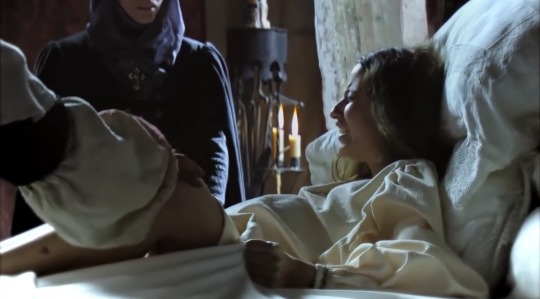

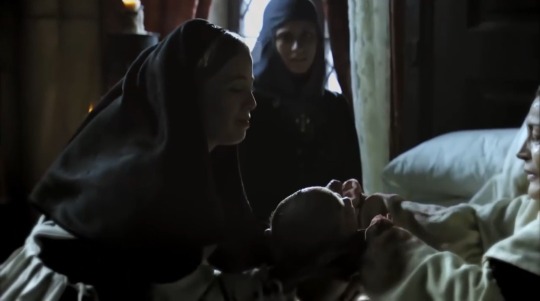
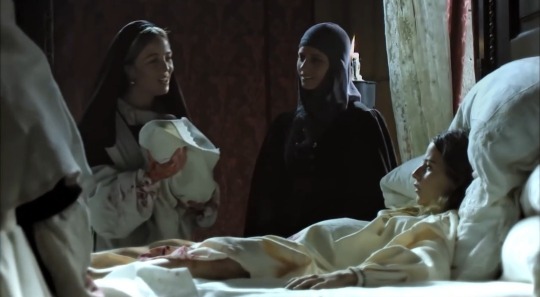




On July 10, 1503, Juana gave birth to her fourth child, Ferdinand I, Holy Roman Emperor, in Alcalá de Henares, Spain.
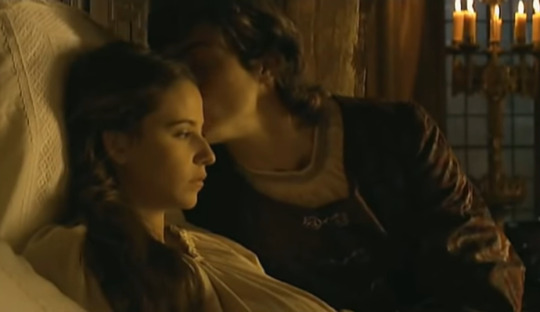
On 15 September, feverish and in pain, the queen gave birth to a third daughter. Marie, the later Mary of Hungary, was baptized on 20 September at the church of Notre Dame de Sablon. Juana’s seclusion and captivity had long deprived her of her children and, during those rare moments when Philip tried to use them to soften her stance towards him, she had found it unsettling. But she now sought to maximize her time with them. Early in November, Philip left Brussels for Mechelen and Antwerp on the first leg of the second Spanish journey. Juana set out separately, intending to travel through Ghent and Bruges, and, Querini noted, she “has had all the children brought from Malines [Mechelen] and takes them with her to enjoy their company …”



Juana gave birth to her last child and daughter, Catherine of Austria in Torquemada, a town in the province of Palencia, Spain. Catherine was born on February 14, 1507, in the Torquemada Castle. When she was pregnant with her last child, Catherine of Austria, Joanna's mental instability had already worsened. She gave birth while she was in the town of Torquemada, and it is said to have been a difficult and complicated birth.
23 notes
·
View notes
Text
History Of Fish and Chips
Okay, Fish and Chips! Staple food of England, literally Ambrosia from the Gods themselves. In the North, it's gravy on them (sometimes) and in the South, it's curry sauce on them (sometimes). Mushy peas is optional (or just. peas). But Fish and chips? Godly. Magnificent. We don't. Actually know how fish and chips was created or who specifically invented it. We *do* know that fried fish being eaten in the UK was brought by Jewish immigrants from Spain and Portugal who had spent some time in the Netherlands in the 16th century (similar meals include Pescado Frito from Spain). We *do* know chips were in England around a similar time-frame from possibly Belgian or Irish migrants. Fucking Charles Dickens mentions Fried Fish warehouses in England in the fucking 17th century, so we know it was a popular meal in England around this time. Joseph Malin (a Jewish migrant) as well as John Lees are both credited with being the *earliest* founders of fish and chip shops - *that we know of.* This means they did not invent fish and chips, this means that they *commercialised* it - as there are references of fish and chips prior to this. Fish and chips was a stock meal of the Working Class communities, specifically those with a trawling and fishing industry from the North Sea; Again, we do not know *who* invented the meal, but it is likely Working Class individuals simply merged two elements of immigrant cuisines together and well, Fish and Chips :) I must also point out it is very common for cusisines of countries to be influenced by other countries. For example, there are Japanese dishes that are influenced by the *Portugese* and that doesn't make them *not* Japanese. Just look up Japanese sugar-egg noodles. So, in short: Fish and chips are a staple of English cusine, developed from the fusing of two migrant cusines (chips + fried fish) by working class people :)
23 notes
·
View notes
Note
Do you have any french songs reccomendations
Hiii sorry im answering so late but I guess it’s better than never huh😭 hope this helps!
So I’m gonna put artists and for each one three songs I like from them as examples but generally I like most of their songs :) and then I added some random songs I like as well, I tried to put lots of different stuff as I don’t know what kind of music you’re more into!
- Pomme : on brûlera / pourquoi la mort te fait peur / tombeau
- Angèle : ta reine / taxi / libre
- Brigitte : Palladium / Battez-vous / Sauver ma peau
- Alain Souchon & Laurent Voulzy : Oiseau malin / Bad boys / Derrière les mots
And here are some random french songs I like:
Je te laisserai des mots (by Patrick Watson)
As-tu déjà aimé (by Louis Garrel & Grégoire Leprince-ringuet) (this one is from a musical)
Comme un boomerang (by Etienne Daho & Dani)
Pull marine (by Isabelle Adjani)
J’en rêve encore (by De Palmas)
Les miroirs dans la boue (by William Sheller)
Ma préférence (by Julien Clerc)
Le chant des sirènes (by Fréro Delavega)
Mesdames (by Grand Corps Malade)
Voilà (by Barbara Pravi)
P’tit gars (by Suzane)
Et même après je t’aimerai (by Hoshi)
L’homme de sa vie (by Lili Cros & Thierry Chazelle)
Nelly (by Superbus)
Le vent nous portera (by Noir Désir)
Un garçon pas comme les autres (by Fabienne Thibeault)
Tous les cris les S.O.S (by Daniel Balavoine)
À la faveur de l’automne (by Tété)
Toute une vie sans te voir (by Veronique Sanson)
Sacré géranium (by Dick Annegarn)
Photos souvenirs (by William Sheller)
Monsieur (by Thomas Fersen)
Le mariage anglais (by Malicorne)
Gentleman cambrioleur (by Jacques Dutronc)
Le pays va mal (by Tiken Jah Fakoly)
Comme ils disent (by Charles Aznavour)
Tes yeux verts (by Feu! Chatterton)
Le Sampa (by Richard Gotainer)
Je dis aime (by -M-)
Clémentine (by Yves Montand)
Salade de fruits (by Bourvil)
Les mots bleus (by Johan Papaconstantino)
Le dernier jour de disco (by Juliette Armanet)
Les copains d’abord (by Georges Brassens)
Göttingen (by Barbara)
Vénus (by Joanna)
5 notes
·
View notes
Text
Dérépublicanisation et déchristianisation
« Notre affaire Dreyfus aura été la dernière des opérations de la mystique républicaine (…) aussitôt après nous commence le monde moderne. Le monde qui fait le malin. Le monde des intelligents, des avancés, de ceux qui savent, de ceux à qui on n’en remontre pas, de ceux à qui on n’en fait pas accroire. Le monde de ceux à qui on n’a plus rien à apprendre. C’est-à-dire : le monde de ceux qui ne croient à rien, pas même à l’athéisme, qui ne se dévouent, qui ne se sacrifient à rien (…) Exactement : le monde de ceux qui n’ont pas de mystique. Et qui s’en vantent . Qu’on ne s’y trompe pas, et que personne par conséquent ne se réjouisse, ni d’un côté ni de l’autre. Le mouvement de dérépublicanisation de la France est profondément le même mouvement que le mouvement de sa déchristianisation. C’est ensemble un même, un seul mouvement profond de démystication. C’est du même mouvement profond, d’un seul mouvement, que ce peuple ne croit plus à la République et qu’il ne croit plus à Dieu, qu’il ne veut plus mener la vie républicaine, et qu’il ne veut plus mener la vie chrétienne, (qu’il en a assez), on pourrait presque dire qu’il ne veut plus croire aux idoles et qu’il ne veut plus croire au vrai Dieu. La même incrédulité, une seule incrédulité atteint les idoles et Dieu, atteint ensemble les faux dieux et le vrai Dieu, les dieux antiques, le Dieu nouveau, les dieux anciens et le Dieu des chrétiens. Une même stérilité dessèche la cité et la chrétienté. La cité politique et la cité chrétienne. La cité des hommes et la cité de Dieu. C’est proprement la stérilité moderne. Que nul donc ne se réjouisse, voyant le malheur qui arrive à l’ennemi, à l’adversaire, au voisin. Car le même malheur, la même stérilité lui arrive. Comme je l’ai mis tant de fois dans ces cahiers, du temps qu’on ne me lisait pas, le débat n’est pas proprement entre la République et la Monarchie, entre la République et la Royauté, surtout si on les considère comme des formes politiques, comme deux formes politiques, il n’est point seulement, il n’est point exactement entre l’ancien régime et le nouveau régime français, le monde moderne ne s’oppose pas seulement à l’ancien régime français, il s’oppose, il se contrarie à toutes les anciennes cultures ensemble, à tous les anciens régimes ensemble, à toutes les anciennes cités ensemble, à tout ce qui est culture, à tout ce qui est cité. C’est en effet la première fois dans l’histoire du monde que tout un monde vit et prospère, paraît prospérer contre toute culture.»
Charles Péguy, Notre Jeunesse, réed. Tempus, pp. 44-45.
6 notes
·
View notes
Text
Ce que le naïf sait

"Jamais on n’a été aussi incapable de faire aucune véritable révolution. Parce que jamais aucun monde n’a autant manqué de fraîcheur."
~ Charles Péguy
Péguy écrivait cela en 1905 à propos de la révolution sociale qu’il liait à la révolution morale et religieuse. Que dirait-il aujourd’hui où le manque de fraîcheur n’est plus seulement vécu, mais revendiqué ! Non contents d’être revenus de tout, nos contemporains se glorifient de leurs doutes. Ils sont fascinés par leur débâcle. Ils pratiquent une lucidité à sens unique, qui s’exerce sur les entraves et non sur les réussites, qui libère des engouements mais aussi des engagements. Ils sont lâches par conformité au néant. Ils hésitent à agir par crainte du ridicule.
Tout leur devient illusion, tant ils se gardent du leurre. Plutôt que de croire à une vérité qu’il importe de connaître, à un amour qu’il importe de servir, ils croient à l’erreur et au mensonge dont ils ne veulent pas être dupes. Ils préfèrent renoncer plutôt qu’être trompés. Par peur de courir des risques, ils font comme si la partie était perdue d’avance et s’installent dans un nihilisme railleur, une dérision boudeuse, une détresse désinvolte.
On objectera que c’est le fait d’une minorité d’intellectuels qui élabore la culture dominante, mais ne représente pas la masse des hommes. Celle-ci résiste à cette démoralisation, s’accroche ou fait retour à d’anciennes certitudes.
Mais justement, la régression comme réplique à la dissolution n’est pas un bon remède. L’une et l’autre s’entretiennent. Toutes deux trahissent le même dépérissement intérieur, le même vieillissement stérile. La solution est dans une redécouverte de la naïveté. Ce n’est pas pour rien que ce beau mot vient du mot nativité et qu’il exprime ce qui est neuf, originel, inentamé, confiant : le jaillissement créateur.
Dans sa version péjorative, le naïf est l’imbécile qui ne sait pas et qu’on berne aisément. Il reste à se demander si le malin qui ricane n’ignore pas ce que le naïf sait et si la lucidité de ce dernier ne porte pas plus loin que les obstacles qui le désarçonnent.
Comme toutes les créatures sorties des mains de Dieu, le naïf est appelé à souffrir. Il peut être conduit au martyre. Est-ce une raison pour, volant au secours du bourreau, préférer la déchéance à la naissance ?
On ne souligne pas assez non plus que si le naïf est celui qu’on trompe, lui ne trompe pas. Il se livre entièrement. Il accorde un total crédit.
C’est bien pourquoi, malgré les mécomptes, il obtient le maximum, à l’inverse du désabusé qui ne retire que des cendres.
Crédit photo – Creative Common
0 notes
Text
20 Questions For Fic Writers
the lovely wonderful amazing super talented @royalwilmon tagged me
How many works do you have on Ao3?
11
What's your total Ao3 word count?
Uhh over 4k what the actual fucking hell
What fandoms do you write for?
Right now exclusively YR, but I've written for Yuri on Ice, and Horimiya. I may or may not have written Charles Dickens fanfic for homework once
Top five fics by kudos:
How Katsuki Yuuri beat his fiancé and set the figure skating fandom on fire (Yuri on Ice)
O who would want to be a King
Baked Goods (Horimiya)
Oversight
The way of the househusband
Do you respond to comments?
I try to, although it depends on what's going on with me on any given day.
What is the fic you wrote with the angstiest ending?
Hm...it's a battle between Oversight and these graves are all too young. Both are predominantly about grief and I definitely channeled a lot of past grief into it.
What's the fic you wrote with the happiest ending?
O who would want to be a King
Abdication AND Wilmon wedding? what more could a girl want?
Do you get hate on fics?
Not really, fingers crossed tho.
Do you write smut?
Yes, as of recently
Craziest crossover:
I have written one thing that could pass for a crossover. It's a YR crack fic written before S2 where adult Wille abdicates and becomes a househusband. It is 100% a rip off of way of the househusband . I will not accept any comments or criticisms
Have you ever had a fic stolen?
hmm, not that I know of
Have you ever had a fic translated?
No, but I have been a translator of fic dialogue.
Have you ever co-written a fic before?
Nopee
All time favourite ship?
Oh God I hate this question.
Wilmon, Victuuri and Roy are definitely top 3 but please don't make me choose.
What's a WIP you want to finish but doubt you ever will?
Probably Oversight? In the sense that I wanted to make it a series of Malin thru the season but I don't really feel like exploring her character in S2 pr s3
What are your writing strengths?
I ... genuinely don't know. Don't get me wrong, I don't think I'm a bad writer, but I'm not sure I can pinpoint a strength in particular.
What are your writing weaknesses?
I think I tend to be quite disorganised overall. I always worry my stuff is too rambly and it's difficult to connect with it emotionally.
Thoughts on dialogue in another language?
I don't mind it but it has to make sense/be logical? I just hate when one sentence will b
First fandom you wrote in?
Lucifer! I hated the show's final so much I deleted the fic though.
Favourite fic you've written?
All of them? None of them? Honestly I try to forget about them the second I hit publish.
No pressure tags:
@omar-rudeberg @dreamyelectronicmusic @oneofthosebells
0 notes
Text

Résistez au diable !
Soumettez-vous donc à Dieu ; résistez au diable, et il fuira loin de vous.
Jacques 4.7
Par ce verset, la Bible nous invite à résister au diable, qui est décrit par Pierre comme un lion rugissant : "Soyez sobres, veillez. Votre adversaire, le diable, rôde comme un lion rugissant, cherchant qui il dévorera" (1 Pierre 5.8).
De nombreuses personnes, même parmi les chrétiens, doutent de la réalité de son activité dans ce monde. Charles Baudelaire a même dit : "La plus belle des ruses du diable est de vous persuader qu’il n’existe pas." Cependant, le diable est bien là. Tel un lion, il rôde, rugit et il cherche une proie.
Un jour, mon épouse est venue me chercher à l’aéroport Charles-de-Gaulle. J’avais réussi à lui garder une place au dépose-minute. Un homme est arrivé en voiture et m’a dit de partir, car il voulait se garer. Je lui ai dit que j’avais réservé la place pour mon épouse, qui était tout proche. Il s’est alors mis à me crier dessus, à me menacer et à rapprocher la voiture à 10 cm de mes jambes pour me faire peur. Je lui ai montré que je n’avais pas peur et que j’étais déterminé. Il a fini par s’éloigner, dépité, en rouspétant.
C’est une image de Satan. Il a été vaincu par Christ à la croix. Il ne peut plus nous toucher et peut seulement rugir pour essayer de nous faire peur et de nous faire rater nos destinées en Jésus-Christ.
Nous ne devons pas laisser accès au diable, par exemple en laissant éclater la colère : "Si vous vous mettez en colère, ne péchez point ; que le soleil ne se couche pas sur votre colère, et ne donnez pas accès au diable"(Éphésiens 4.26).
Un couple ne doit pas laisser accès au diable en se privant trop longtemps de l’un de l’autre
(1 Corinthiens 7.5).
Nous ne devons pas non plus laisser accès au diable en laissant des blessures non refermées. En ne pardonnant pas, nous risquons de laisser des failles par lesquelles il pourrait s’immiscer dans nos vies.
Pour nous défendre, la Bible nous encourage à prendre "par-dessus tout cela le bouclier de la foi, avec lequel nous pourrons éteindre tous les traits enflammés du malin !" (Éphésiens 6.16).
David Nolent
0 notes
Text
in memoriam
À PHILIPPE TRICHÉ, INITIATEUR DU RACK'AM DE BRÉTIGNY-SUR-ORGE
A l'heure où la salle brétignolaise fête en grande pompe ses 30 ans d'existence, pas un mot sur celui qui l'a créé, que ce soit dans la presse où du côté des gérants actuels. Le Parisien évoque "un animateur passionné de musique" et Le Républicain "un éducateur de la ville de Brétigny". Le temps passe et les mémoires s'effacent...
Bah moi, je vais vous raconter ce qui s'est passé pasque la mémoire, je l'ai toujours vivace. Il faut remettre les choses dans leur contexte. Située au cœur du quartier Rosières, au carrefour de trois cités chaudes de la banlieue sud, l'endroit est stratégique. La déshérence sociale règne dans ces quartiers et les flambées de violences peuvent survenir à tous moment dans un contexte politique tendu. La coke et les drogues chimiques n'ont pas encore envahit les cages d'escaliers. À l'époque, c'est plutôt le shit et surtout l'héroïne qui y font des ravages.
La municipalité, longtemps communiste, a basculé à droite et c'est "mon vieux complice"* de Jean de Boishue qui est aux commandes de la ville. Pour maintenir la "paix sociale" dans ces quartiers, le p'tit jeune "animateur passionné de musique" qu'il vient de recruter et qui s'avère "moins con que la moyenne" va être le pilier idéal de la création d'un vrai lieu de rencontre musical. Car il est malin le Philippe. Au fil de ses expériences d'organisateur de concert, il tisse des liens durables avec le show business de l'époque et monte rapidement en gamme. Il tisse également des liens avec les associations locales, notamment la Mission locale des 3 Vallées. En un mot : il est démerde.
En 1992, "Après 2 ans d'expériences, la salle a été entièrement rénovée et adaptée pour rentrer dans un cadre professionnel de salle de spectacles et a obtenu le label [du Ministère de la culture ndlr] Café-Musiques.", rappelle La Gazette Magique, la lettre bimestrielle de la Fédération des salles et clubs rocks français de juillet 1997. Le Rack'Am est maintenant une salle de 300 places équipée son et lumière. Elle est gérée par le club de Prévention Charles Péguy, Philippe Triché en est naturellement le directeur et le programmateur. Elle emploie 2 permanents et accueille aussi des jeunes du quartiers qui viennent découvrir les métiers de la scène. Le budget, autofinancé pour près de la moitié est de 500 000,00 francs (soit environ 126 000,00 € d'aujourd'hui). L'autre moitié du financement est assuré par la ville et la DRAC.
Le lieu accueille en moyenne 3 concerts par mois. Priorité est donnée aux groupes de rock français (95% de la programmation) avec une scène ouvertes aux groupes locaux. La structure organise également des festivals d'été et accueille des artistes en résidence. C'est à cette période, jeune journaliste, que je découvre l'endroit et son directeur rock'n'roll ! Tout de suite, le Philippe sait convaincre la presse locale et nationale : "Pour les journaleux, c'est open bar 24h/24 !". Évidemment, on s'est immédiatement bien entendu ! Ainsi, je vais passer de temps à autre le samedi vers 17 heures pour assister aux balances, faire quelques clichés et interviewer une pléiade d'artistes.
Et je vais y faire des rencontres : le regretté Papa Schultz (Portes Mentaux, Parabellum, Los Carayos etc.) ; Dominique A ; Joss et Les Rats ; Reuno et Lofofora ; Toulis et Les Escrocs mais aussi Les V.R.P (qui ont refusé toute interview) ; Les Satellites ; Les 10 petits indiens et tout un tas de célébrités de l'époque dont j'ai perdu le nom... Le Rack'Am était à cette période une véritable référence régionale en la matière et avait surtout la qualité de canaliser les énergies des jeunes de banlieues qui s'emmerdaient (déjà) sec à l'époque...
Lorsque j'ai quitté le Républicain en 1996, Philippe quittait également le Rack'Am pour reprendre la direction d'une autre salle : L'Empreinte à Savigny-le-Temple si je me souviens bien. Dans des conditions plus avantageuses sans doute car les tensions politiques mais aussi sociales étaient fortes à Brétigny. En 1995, il y avait eu émeute lors de la diffusion du film de Kassovitz "La Haine" au Ciné 220 de la ville qui avait été ravagé. Des sacs de biftons circulaient entre la mairie et certains opposants des cités qui couinaient à propos de la sortie d'un bouquin du député-maire intitulé "Banlieue mon amour" : certains passages n'avaient pas plus... Ambiance délétère, Affaire des HLM de Paris, le procureur de l'Essonne rapatrié en urgence de l'Himalaya où il était en vacances, tout le RPR local mouillé jusqu'aux oreilles pour protéger "le grand con"...
Je n'ai jamais recroisé Philippe depuis ces temps anciens. C'est en lisant la presse locale que j'ai appris que c'était les 30 ans du Rack'Am. En parcourant les articles, je me suis aperçu qu'il n'était cité nulle part, c'est quand même un comble. Je me suis donc mis en quête de le retrouver et j'ai rapidement appris qu'il était... Décédé. Ça m'a fait un pincement au cœur car je l'appréciais ce mec. Toute sa vie, il a œuvré pour les musiciens et c'était un organisateur hors pair. Je me souviens de lui comme si c'était hier et d'abord : c'était hier ! Avant de disparaître à l'âge de 55 piges en mars 2018, il aura dirigé entre autre L'Atabal, scène Rock incontournable du Pays Basque. C'est sur leur page Facebook que j'ai appris la triste nouvelle, entre une pensée de Manu Tchao et les larmes de ses amis, de sa sœur... Une pensée pour ses enfants, sa famille, ses proches. * L'élu appelait ainsi souvent les personnes âgées...

0 notes
Text
Jansson Ridge
read it on AO3 at https://ift.tt/Ti7RM6U by xyZ_Aether Hillerska Boarding School. School for the rich and privileged for Sweden.But is that all there is to it? or:theres more than two secret societies in Hillerska Words: 391, Chapters: 1/1, Language: English Fandoms: Young Royals (TV 2021), Heartbreak High (TV 2022), Heartstopper (TV) Rating: Not Rated Warnings: Graphic Depictions Of Violence, Underage Categories: F/F, F/M, M/M Characters: Simon Eriksson, Wilhelm (Young Royals), Malin (Young Royals), Felice Ehrencrona, Sara Eriksson, Charles "Charlie" Spring (Heartstopper), Nicholas "Nick" Nelson, Darren Rivers, Quinni Gallagher-Jones, Ayub (Young Royals), August (Young Royals), SLT Students (Heartbreak High TV 2022), Henry (Young Royals), Nils (Young Royals), Vincent (Young Royals) Relationships: Simon Eriksson/Wilhelm, Quinni Gallagher-Jones/Sara Eriksson, Nicholas "Nick" Nelson/Charles "Charlie" Spring, Erik & Wilhelm (Young Royals), Simon Eriksson & Wilhelm, Felice Ehrencrona & Wilhelm, Malin & Wilhelm (Young Royals), Sara Eriksson & Simon Eriksson, Ayub & Simon Eriksson & Rosh, Simon Eriksson & Linda, Felice Ehrencrona & Simon Eriksson, Felice Ehrencrona & Sara Eriksson, Felice Ehrencrona & Fredrika & Madison McCoy & Stella, Sara Eriksson & Wilhelm, Sara Eriksson & Simon Eriksson & Linda, Felice Ehrencrona & Sara Eriksson & Simon Eriksson & Madison McCoy & Wilhelm, Douglas "Ca$h" Piggott/Darren Rivers, Quinni Gallagher-Jones & Darren Rivers & Amerie Wadia, Anne & Darren Rivers & Peter Rivers, Quinni Gallagher-Jones & Quinni Gallagher-Jones' Fathers, Darren Rivers & Amerie Wadia, Nicholas "Nick" Nelson & Sarah Nelson, Nicholas "Nick" Nelson & Tao Xu, Charles "Charlie" Spring (Heartstopper) & Wilhelm (Young Royals), Elle Argent & Isaac Henderson & Charles "Charlie" Spring & Tao Xu, simon eriksson & darren rivers Additional Tags: Secret Societies, AU, Training, SPARs, Boarding School, Romance, Smut, Consensual Underage Sex, Initiations, powers, Sports, Rugby, scholarship, Hillerska has an Art scholarship, Possibly Alive Erik, strained sibling relationship, Long Distance Relationships, Prison, Kristina’s Grade-A parenting, Work In Progress read it on AO3 at https://ift.tt/Ti7RM6U
0 notes
Text
School of pleasure
by Yourwonderful The school of pleasure is a place for people to experience and learn all the ways that pleasure can be achieved in a relationship - from dating to orgasms, from pleasing one selves to sharing pleasure in a group. It’s a wide range and shall open the students minds and bodies to a world they have never experienced before. Three couples from three different universes join the school of pleasure to gain more knowledge and experiences for their lives. This fic is set in the 21st century. It’s explicit, filthy and dirty. With some plot. All acts are safe, sane and consensual. And everyone is 21+ years old. PLEASE READ THE TAGS AND TAKE CARE OF YOURSELF. DON’T LIKE DON’T READ. If you haven’t watched the listed shows above, I’d highly recommend it. They are all well made with excellent acting and top storytelling. Words: 1284, Chapters: 2/?, Language: English Fandoms: Young Royals (TV 2021), Heartstopper (TV), Fellow Travelers (TV), Red White & Royal Blue - Casey McQuiston, Red White & Royal Blue (2023), Call Me By Your Name (2017) Rating: Explicit Warnings: Creator Chose Not To Use Archive Warnings Categories: M/M, Multi, Other Characters: Simon Eriksson, Wilhelm (Young Royals), Malin (Young Royals), Nicholas "Nick" Nelson, Charles "Charlie" Spring (Heartstopper), Hawkins Fuller, Tim Laughlin, Jackson Fuller (Fellow Travelers TV), Elio Perlman, Alex Claremont-Diaz, Henry Fox-Mountchristen-Windsor Relationships: Simon Eriksson/Wilhelm, Nicholas "Nick" Nelson/Charles "Charlie" Spring, Hawkins Fuller/Tim Laughlin, Alex Claremont-Diaz & Henry Fox-Mountchristen-Windsor, Jackson Fuller/Elio Perlman Additional Tags: Anal Sex, Sex Education, Exploring, Group Sex, Safe Sane and Consensual, First Time, Come Eating, Come Swallowing, Partner Swapping, Friendship, Double Penetration, Sex Toys, Other Additional Tags to Be Added, Hand Jobs, Elio has they/them pronouns, everyone is 21+, Filth with a bit of plot via https://ift.tt/V1fQo2g
0 notes
Text

Climat : chronique d’une jeunesse déçue et exaspérée Cinq ans environ après la mobilisation des jeunes pour le climat, une grande lassitude s’est installée qui a débouché sur une perte de confiance à l’égard du politique, affirme Adelaïde Charlier, une des porte-parole du mouvement.
C’est le 14 janvier 2019. Pour la première fois, Le Soir utilise les mots « Youth for climate » pour désigner la poignée de jeunes qui appellent leur génération à des grèves pour le climat. Ce jour-là, bien malin qui aurait pu parier sur l’avenir du mouvement. On disserte plutôt doctement sur la question de savoir si les directions d’écoles peuvent ou pas permettre que ces rebelles « brossent » les cours. Bien vu. Le mouvement attirera 3.000, puis 12.500, puis 35.000 jeunes dans les rues, sur le seul mois de janvier. Encadré par deux méga-manifs, en décembre 2018 et fin janvier 2019.
On ne parle alors plus que d’eux. Les jeunes pour le climat sont partout. Défilant, agissant, onscientisant dans leurs écoles. Ils rencontrent les politiques surpris par cette majorité plus si silencieuse. Le Premier ministre de l’époque, Charles Michel (MR), glisse du climat dès l’entame de son discours aux autorités du pays. Le roi Philippe demande de donner aux jeunes « la place qu’ils méritent et d’établir avec eux le socle solide sur lequel ils pourront s’appuyer ». Pour lui, les citoyens « attendent des réponses ambitieuses et constructives ». Il faut « faire plus, plus vite et plus fort », promet un ministre-président. La princesse héritière Elisabeth « partage » les préoccupations de sa génération…
Les jeunes ne s’arrêtent pas là. Ils s’adressent à des scientifiques et experts afin de les aider à argumenter et structurer leurs demandes de mesures politiques transversales. Ce sera le « panel climat » dont les propositions, alimentées par environ 200 experts de tous horizons, sont présentées douze jours avant les élections fédérales et régionales.
Un peu plus de cinq ans plus tard, les jeunes ont quitté la rue. Mais ils alimentent encore largement les marches pour le climat qui se déroulent chaque année (de 20 à 25.000 personnes en décembre 2023). Ils font partie d’autres groupes d’actions – les Code rouge, les Extinction Rebellion, les Totalement Down – qui ont choisi la désobéissance civile. Et surtout, ils en sont revenus des discours et des promesses politiques. L’apprentissage est cuisant : aujourd’hui, on entend surtout des responsables demander des pauses environnementales, se réjouir de la marche arrière de l’Europe en matière d’environnement et de santé, réfuter les objectifs climatiques et contester les actions. « Plus vite et plus fort », disaient-ils… « Le temps des lanceurs d’alerte est passé », affirmait dimanche un ministre français.
« Une grande lassitude s’est installée et elle a débouché sur une perte de confiance à l’égard du politique », confirme au Soir Adelaïde Charlier, une des figures emblématiques des jeunes pour le climat, en prévision d’un débat qui se tiendra ce mardi à Bruxelles. Le monde politique qui psalmodie et se désole sans cesse du désintérêt des citoyens devrait le méditer : il file un mauvais coton, le pays qui désespère sa jeunesse. Michel De Muelenaere dans Le Soir du 12/02/2024 Nous colonisons l’avenir des jeunes
À tous les (ir)responsables politiques qui appellent aujourd’hui à mettre sur pause l’action climatique, transmettons ce message puissant écrit par l’essayiste et historien David Van Reybrouck :
« Nous nous comportons en colonisateurs des générations futures. Nous les privons de leur liberté, de leur santé, peut-être même de leur vie - tous comme les colonisateurs l’ont fait par le passé. Nous imposons les conséquences de nos actes aux humains qui viendront après nous, et ce avec une brutalité et une indifférence qui donnent le vertige. Nous faisons (...) comme si nous pouvions puiser à notre guise dans les ressources disponibles - eau potable, sol fertile, air sein - sans penser qu’ils pourraient en avoir besoin eux aussi. Nous spolions nos petits-enfants, nous dévalisons nos enfants, nous empoisonnons notre progéniture ». David Van Reybrouck, « Nous colonisons l’avenir » , Actes Sud Ce 13 février 2024 se tient à Bruxelles la conférence « Youth and Climate » dédiée aux jeunes de 15 à 25 ans qui auront l’occasion de poser des questions à tous les présidents des partis politiques sur la transition de la Belgique.
Voici le programme
0 notes